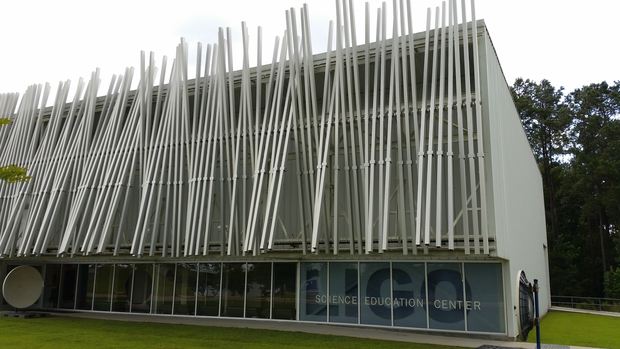LIGO and Informal STEM Education
“Sometimes you can listen to the universe and it speaks, if only you know how to listen.”
- William Katzman, Program Leader, Science Education Center, LIGO Livingston
The Laser Interferometer Gravitational-wave Observatory (LIGO) announced a groundbreaking discovery this week--for the first time, scientists have been able to directly observe and measure gravitational waves resulting from the collision and merger of two black holes. This discovery both confirms a major prediction of Albert Einstein’s 1915 general theory of relativity and provides scientists a new way of observing and deepening our understanding of the cosmos.
For more information about the discovery, see the February 11 NSF press conference.
Ligo's Informal STEM Learning Legacy
In addition to its work on the cutting edge of physics, LIGO has also been a pioneer in the field of informal STEM education (ISE). With support from the National Science Foundation (operations grant PHY-0757058), LIGO’s Science Education Center in Livingston Parish, Louisiana, engages the community in a variety of ways, including professional development for teachers, activities for K-16 students and programs for the general public and community-based groups. These public engagement efforts have also provided settings for ISE research, for example a study exploring parent-child interactions with active prolonged engagement (APE) exhibits in the Center.

For over a decade the LIGO's Science Education Center has partnered with the Exploratorium, in San Francisco, California and Southern University of Baton Rouge (SUBR) to develop teacher professional learning programs and bring interactive exhibits about LIGO-related science to southern Louisiana. Research on how and what teachers learn in these types of experiences can be found on the Exploratorium’s Teacher Institute web page and by searching on InformalScience.org. The Baton Rouge Area Foundation was recently awarded a collaborative research grant (PHY-1506037) along with SUBR from the NSF Integrative Activities in Physics program to build and expand on the work of this collaboration between a Historically Black College or University (HBCU), large research facility and informal science center to broaden participation in STEM. Research on this multilayered partnership will contribute to the literature on the impacts of leveraging the resources of research laboratories for educational purposes.
Beyond contributing educational expertise, the Exploratorium worked with LIGO scientists to design a kinetic art installation along the facility’s 85 ft. long façade called “Wave Wall.” A moving sculpture made up of 122 free-hanging, magnetically-coupled aluminum pendulae, Wave Wall is activated by the wind or by LIGO visitors (via ropes and pulleys). In this exhibit, the themes and phenomena in the Science Education Center--wave motion and propagation, gravity, resonance, and light--are expressed aesthetically in action.
Resources for STEM Educators
Are you a STEM educator looking to incorporate gravitational waves into your programming? LIGO Scientific Collaboration Members have developed the following resources to help you get started:
Visit the Science Education Center website for updates on related learning activities and workshops.
The Exploratorium's Senior Scientist Paul Doherty has also shared many of the activities conducted at LIGO workshops on his personal website.